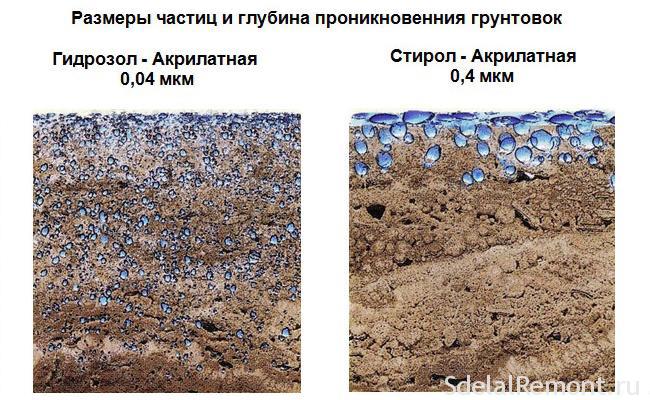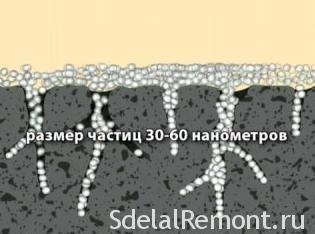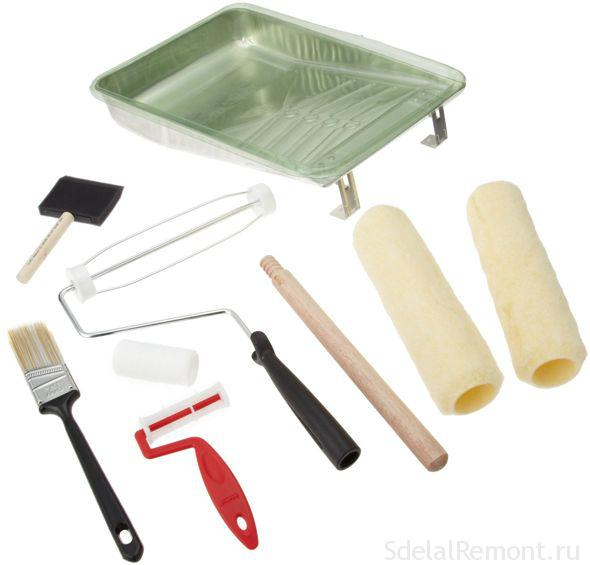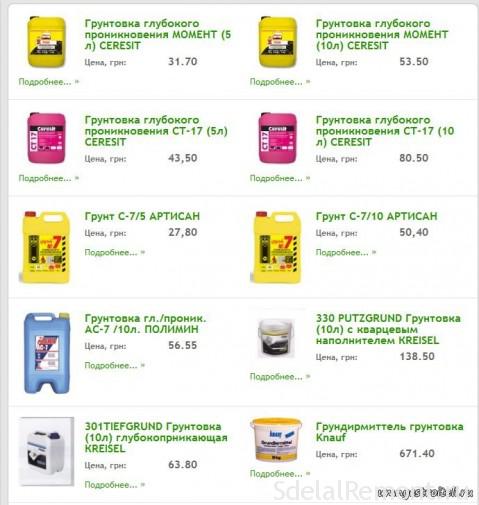The key to success of each repair - it is his conduct in accordance with the technologies and regulations. Today, the sale is a huge number of different building materials, which occupy a great proportion finishing mixture. But the fact, that when applied to the surface after some time, sometimes observed after 1 year, place finishes begins to fall away. Sometimes even whole layers. And though she is very beautiful and the quality was not, the foundation under it has not been properly prepared. And then comes to the fore primer. And the resulting tandem "and primer coat" shall solve any bounce off the wizard teeth precisely in a sequence of words, he must live this phrase.

Even the ancient Greeks knew technologists priming surfaces and its main role. Indeed, precisely because such mixtures loose and granular base becomes strong. Particularly popular in ancient times had a primer in painting, its pre-applied to the web, wall, so that today we can observe the long-term work of art.
that the first, primer or putty?
If you decide to do repairs, you should not feel sorry for their money on building materials and the special role it is necessary to take preparatory steps. for example, you have plans poshtukaturit wall followed by a decorative trim.
Before being laid putty, primer, glued wallpaper, must prepare base. Remove old coating and maximally remove components crumbling. Then take a mortar and get down to business. But what!! All fall off either directly or after some time. And then we realize, that missed the important thing. Primer. Therefore, answering the question "What first primer or putty, plaster And so on?"You can confidently say, of course, primer. And why?

The primer includes in its composition components, that deep soaking into the ground, it fastened and glued, this gives a rough surface and is strong enough. But it is not necessary to hasten, because if you do not give a primer to dry, all the work will come to nothing.
In the case of concrete and brick walls, many may question the need for a primer filler, but, of course, it is a misconception. But in the case of wood coatings question, "Walls first primed or shpaklyuyut?"Makes no sense. Because here, and so it will be clear, that on a smooth wooden surface will not hold anything without the use of any treatments.
properties primer
To properties primer mixtures include:
- Improving the adhesion of subsequent finishing layers (plaster, paint, putty, plasterboard).
- Primer is an excellent antiseptic, which is able to prevent and destroy fungal education, mold even in the thickness of the wall.
- The primer provides high quality and durability of repairs.
Tools required for priming walls

bead
Brush
Capacity for soil
Of the funds
The types of primers

ascertaining, that the primer is an important component of any repair, the following question must be: "What better primer for walls under plaster?». There can not be a clear answer, because they are commercially available for at least 7 species. And to pick up the necessary, should review its composition, action and the materials with which it interacts. Because each primer for under plaster walls or after it is reacted with a base different.
species primers
- One of the most common is an acrylic primer. It is an excellent tool for the processing of loose surfaces. The advantage of this primer is, it dries quickly (to 5 hours), easily applied with a roller or brush, and thus well attached to the surface of concrete and wood, drywall, silicate blocks or. But poorly interacts with the metal, that affects its further corrosion. It has excellent adhesive properties, giving a loose and porous surface necessary strength and stability. Priming the walls under plaster this material will ensure the longevity of your finishing repairs, and the fullness of your pocket money. Acrylic primer is fit for use both outside, and inside a dwelling house.
- The next least popular type of primer is an alkyd. It is used primarily for wood. It provides durable rough to the touch contact layer, which can subsequently putting filler, plaster, gypsum. It can also be used for exterior, and domestic work in an apartment house. Drying and complete solidification of this material takes place at room temperature for 15 hours.
- Often used for finishing work glyptal primer. It should be used only for dry rooms only. Full curing cycle is 24 hour at room temperature. The advantages of this primer is the possibility of treating metal surfaces.
- The next type of primers, relating to synthetic, a polyvinyl acetate. It has a very special meaning for painting paints containing polyvinyl. It is recommended to be used for exterior applications. The polymerization process is only 30 min.
- The next, least toxic, but more effective is perchlorovinyl primer. Apply it inside premises is prohibited due to the high concentration of chemically active substances. But for the exterior is one of the best options, despite the fact that it dries in just 1 time. And it can be used on metal base.
- The next type is highly toxic primers polystyrene. It is well sealed with any materials, that makes it an excellent choice for outdoor applications.
- The next type - a phenolic. It perfectly held together by wooden and metal surfaces, which is why it is not recommended to use inside the dwelling. The cycle is complete solidification 15 hours.
Why primed wall after putty?
If the primer to topcoat was absolutely necessary, after finishing is applied to the GM. Therefore, the question "Do I need to prime the walls after finishing putty?"Quite relevant.
The primer will be equally affected by finishing layer and above it. Finishing the putty layer is sufficiently dense material, which is subject to almost obsypaniya. And then at this stage to consider the further wall finish.
If there are papered wallpaper, the primed surface can itself wallpaper paste, after allowing it to dry. Here savings primer, but higher consumption of glue required. The second case, when you can not use a primer, It is followed by painting the walls of water-based formulations. Paint itself contains in its composition similar component acrylic primer.
But here's a primer the walls after plastering is required, even after the finish, if they stick liquid wallpaper on it, plaster decorative trim, etc..
Having dealt with the types and purpose primers can now provide a comprehensive combination of high-quality and durable repairs: primer, putty, to wash the walls and decorative trim.













I just today and doing wall primer, We started to repair the hall. I wanted to ask, after pogruntovany wall and stand up day 2, they should still be primed? Or, you can safely move on to wallpapering?